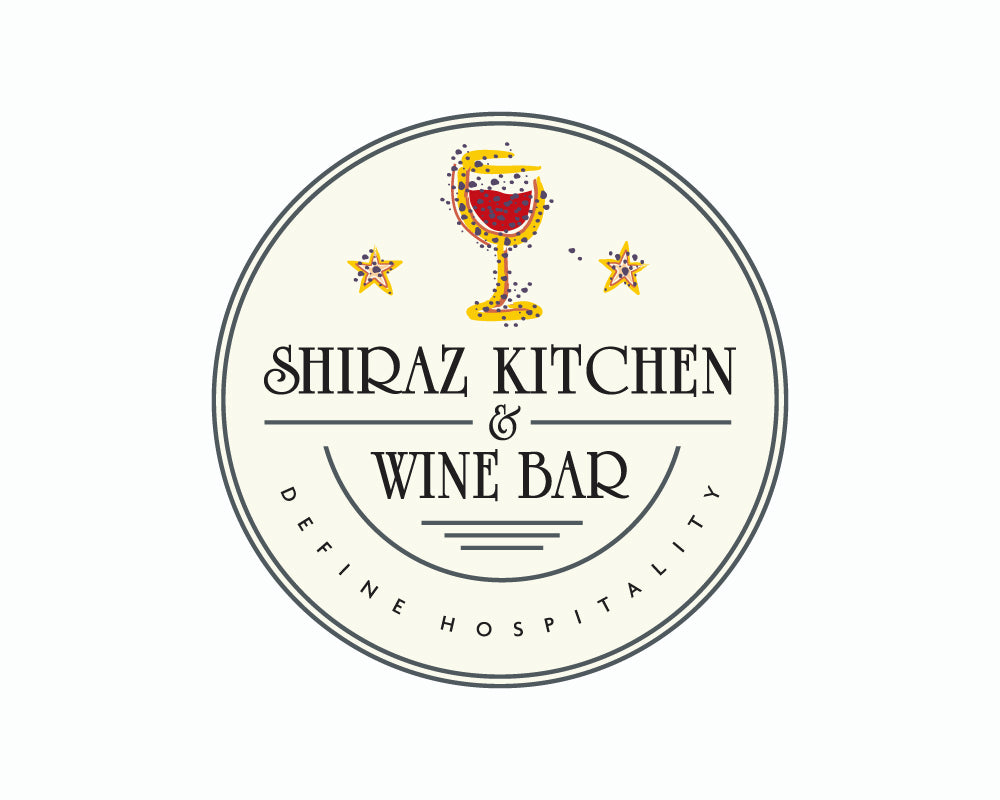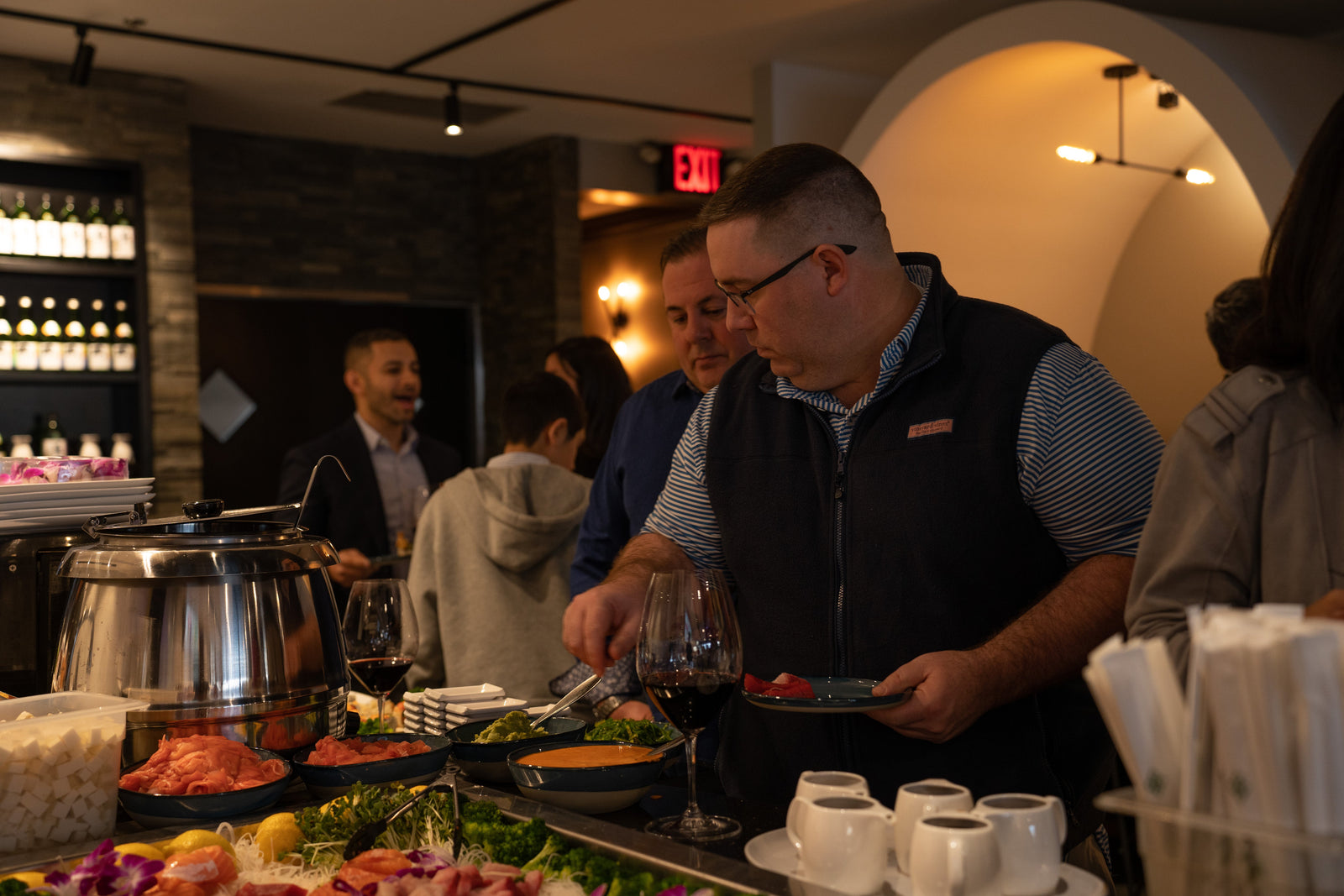
On some nights, the dining room at Shiraz Kitchen & Wine Bar glows like a painting. A bowl of ghormeh sabzi lands on the table, dark green and almost inky, steam rising with the smell of herbs, lime and slow‑cooked beef. Beside it, a skewer of saffron chicken kabob, golden and glistening, still crackling softly from the grill. Between them, holding its own like a character in the scene, is a glass of deep red wine. For the chef‑owner, Reza Parhizkaran, this is the sort of frame he imagined long before he had keys to either dining room: Persian stews and kabobs in the foreground, serious wine in proper glasses, strangers sinking into a story they did not know they were joining. In that moment, it is not just dinner in Chelsea or in White Plains. It is an old tale slipping quietly into a New York night, a story that began in the mountains of ancient Persia and now resurfaces, improbably and inevitably, in every glass of Shiraz poured at these tables. This is a love story between wine and Persian food.
The First Whisper of Wine in Persia
Long before wine lists and natural‑wine bars, before anyone argued over stemware or tannin, there were clay jars buried in the earth. In the Zagros Mountains of what is now northwestern Iran, archaeologists uncovered a Neolithic village called Hajji Firuz Tepe. In the floor of a mud‑brick room, thought to be a kitchen, six earthenware jars were sunk into the ground. When scientists scraped the yellowish residue from their interiors and tested it, they found tartaric acid and its salts, the fingerprints of fermented grape juice, along with traces of tree resin used to preserve the liquid. The jars date to roughly 7,000 years ago. Which means that some of the earliest evidence of winemaking on the planet belongs not to France or Italy, but to Iran. Wine, in other words, began in a room that looked more like a home kitchen than a château. It was a way of catching summer in a jar and trusting time to deepen it. Over the centuries, production moved from mountain villages into cities. One city in particular became synonymous with vines: Shiraz. For generations, Shiraz was famed for its wine, its gardens, its roses and its easy‑going spirit. Later, it became the home of poets, Hafez and Saadi among them, who wrote of taverns, intoxication and the complicated pleasures of the cup. So when a server sets down a glass of Shiraz in a restaurant today, there is more in it than dark fruit and spice. There is the echo of clay jars under an earthen floor, and of a city that once built its identity around wine and poetry.
Shiraz or Syrah? Legend, Science and the Space in Between
The grape in that glass, however, tells a different story. Modern DNA work has shown that Syrah, the grape also sold under the nameShiraz, is the child of two old French varieties, Dureza and Mondeuse Blanche. Its genetic home is the Rhône Valley, not the streets of Shiraz. Science, as it often does, leaves little room for romance. And yet, for centuries, a more romantic story persisted. Cuttings from Shiraz were said to have been carried west by merchants or crusaders, planted in European soil and adopted under a slightly altered name. Old texts mention vines called “Scyras” and “Schiras,” enough to keep the legend alive. It is almost certainly not true in the literal, botanical sense. But like many Persian stories, the truth sits somewhere between history and imagination. What is clear is this: Shiraz, the city, was a genuine center of wine and wine culture.
Syrah or Shiraz, the grape, is now one of the great red varieties of the world.
And “Shiraz” on a label has come to signal not just a style, usually riper and more opulent than Syrah, but a certain mood: warmth, generosity, a hint of myth. For Shiraz Kitchen, that echo is useful. It offers a bridge from those ancient foothills to a wine glass in Manhattan or Westchester, especially when that glass is set down next to a bowl of ghormeh sabzi or a plate of saffron kabob.
Wine, Mystics and the Art of Being Drunk
Persian culture did not simply make wine. It thought with wine. It prayed and joked and argued with wine. In classical Persian poetry, the cup is rarely just a cup. Wine stands in for everything that loosens the grip of fear: love, rebellion, divine ecstasy, the moment when the self dissolves into something larger. Rumi writes of lovers drinking wine and tearing away the veils that cloud the heart. Omar Khayyam imagines paradise as a loaf of bread, a jug of wine and a beloved beside him in the wilderness, no further heaven required. Hafez, the great poet of Shiraz, famously urges his reader to “color the prayer rug with wine,” collapsing the line between the sacred and the profane in a single stroke. Sometimes the wine in these verses is literal, and the intoxication is exactly what it seems. Sometimes “wine” is clearly a metaphor for divine love, for freedom, for the courage to live honestly. The ambiguity is part of the pleasure. In Persian literature, the glass almost always holds more than one thing. At Shiraz Kitchen, that inheritance appears in quieter ways. There are a few lines of poetry on the walls, yes, but the real conversation happens between plate and glass, between a dish that travelled from someone’s mother’s stove and a wine grown on a volcanic slope in Sicily or a hillside in France.
Ghormeh Sabzi: A Stew With Its Own Weather
If Persian cooking were a painter’s palette, ghormeh sabziwould be the darkest, most saturated green in the box. It begins with herbs, mountains of them. Parsley, cilantro, scallions, sometimes leeks, chopped and then fried gently until they give up their water and darken several shades. The kitchen fills with a smell like wet grass and smoke. Fenugreek, the small seed that gives the dish its unmistakable perfume, joins the pan. Kidney beans go in next, along with cubes of beef. Then come the dried limes, hard and nearly black, cracked to release a sour, smoky scent that will run through every spoonful. The pot simmers for hours. What emerges is not gentle food. Ghormeh sabzi is intensely herbal, sharply tangy from the limes, faintly bitter around the edges from the fenugreek and deeply comforting once you surrender to it. It behaves less like a stew and more like its own kind of weather system. For me, that weather was the background climate of childhood. Ghormeh sabzi was the dish that announced itself from the hallway long before it reached the table, the sharp perfume of dried limes, the dark green fragrance of slowly fried herbs. At home, it appeared on the family table almost once a week, always the same way: thick, never watery, the broth dense with flavor, the meat collapsing into the greens. In his memory, no restaurant version has ever quite matched his mother’s. In his telling, she still makes the best ghormeh sabzi in the world. On the plate at Shiraz Kitchen, the stew is given a frame of white rice, sometimes with a streak of saffron, sometimes with a shard of crisp tahdig, and perhaps a simple salad. Then the question arrives, as it does almost every night.
“And what should I drink with this?”
Wines That Aren’t Afraid of the Dark
There is almost always a flicker of doubt with a first bowl of ghormeh sabzi. Guests hear “slow‑braised herbs, dried limes, fenugreek, beef,” and nod. When the bowl arrives, dense and black‑green and glossy, they inhale and hesitate for half a second before taking that crucial first bite. The stew does not behave like a polite main course. It does not want a simple, juicy red. It wants a partner that can stand in its weather. Often, that partner isSyrahfrom a cooler climate, in the spirit of the Northern Rhône. In the glass, there is dark berry fruit, black pepper and sometimes a whisper of smoked meat or olives. Next to the stew, those flavors line up neatly with the herbs and beef. The wine’s spice feels less like an addition and more like an extension of what the fenugreek and parsley are already doing. On other nights, the table leans toward something plusher, and the answer becomesShiraz, riper fruit, softer tannins, a certain generosity. At Shiraz Kitchen, that often means the house pour, Two Hands Angels’ Share Shiraz, with its dark berries and supple texture. The sharpness of the dried limes finds balance in the wine’s richness, and what might have been too sour or too heavy by itself settles into proportion. There are guests who ask for “something a little lighter, but still serious.” For them, the pairing might be a Cabernet Franc, its leafy, green‑olive notes echoing the herbs in the bowl, or a Sangiovese or Tempranillo whose red fruit and acidity can stand next to the limes without flinching. Some Mediterranean reds, slightly rustic and sun‑struck and often from smaller producers, seem to understand ghormeh sabzi instinctively. They have lived with long braises and big herbs before. If you watch a table as these pairings land, the sequence is often the same. A cautious spoonful of stew, then a second, larger bite. Only then, almost experimentally, a sip of wine. Sometimes the guest pauses and looks down at the glass, faintly surprised. The limes are still bright, the herbs still wild, but now there is pepper and smoke and a line of fruit threading through the bowl. The best pairings do not make ghormeh sabzi easier. They make it make sense.
Herbs and tannin.
Lime and acidity.
Slow‑cooked beef and dark red kidney beans.
By the time the bowl is scraped clean and the last red streak slips down the inside of the glass, what felt intimidating at first starts to feel inevitable, as if this stew and this wine were always meant to find each other on the same table, in this city, on this night.
Saffron Chicken Kabob: Gold on the Grill
If ghormeh sabzi is midnight, complex and moody and demanding attention, then saffron chicken kabob is late afternoon... It starts with saffron, the most expensive spice in the world and one of the most unforgiving. Those crimson threads are bloomed in warm water until they release a deep, sunset gold and a fragile aroma somewhere between hay, honey and wildflowers. That liquid is folded into a marinade with yogurt, grated onion, lemon juice and olive oil. The yogurt tenderizes. The onion brings sweetness and a faint bite. The lemon keeps everything awake and of course olive oil... Spices are added carefully, never enough to compete with the saffron. The chicken sits in this mixture until every fiber is stained a pale yellow and perfumed. Then it moves to the grill. On a busy night, in Chelsea or in White Plains, the skewers hit the grates with a hiss. Fat drips, flames flare, smoke rises. Char marks appear like handwriting across the meat. The scent, smoke and saffron and caramelizing yogurt, drifts across the dining room, and somewhere, at another table, someone puts down a menu and asks, “What is that?” On the plate, the kabob is all light and contrast: gold from the saffron, black from the grill, red from blistered tomatoes, white from the rice catching every drop of juice. It looks, and tastes, like sunlight you can cut with a fork. Again, the question comes.
“What should we drink with this?”
Wines That Know When to Listen
Saffron does not like to shout over anyone, and it does not like to be shouted over. It needs wines that understand how to listen. The staff often starts the conversation along the same coastline where so much grilled meat and fish has met wine for centuries, the Mediterranean. Sometimes the right answer is awhite with both spine and sunshine, a wine from the south of Italy or a Southern French blend, with crisp acidity and flavors of citrus and stone fruit. On certain nights, that means a bottle of Alta Mora Etna Bianco, Carricante from Sicily, grown on volcanic slopes that look down to the sea. In the glass, it tastes of lemon zest, white peach and a faint, smoky minerality. Next to the saffron chicken, it has enough structure to stand up to the grill, and enough finesse to weave around the spice instead of trampling it. If the table is leaning toward pink, the rosés come down from the shelf.
A dry rosé with real weight, like Château d’Esclans Whispering Angel Rosé, Côtes de Provence, brings red‑berry fruit, citrus and a stony, mineral backbone. It can handle the sweetness of the tomatoes and the char on the meat without losing its freshness. The pale color and cold glass make immediate visual sense next to the gold of the kabob. The first sip confirms it. There are always red‑wine loyalists, the ones who will hear the argument for white and rosé, nod politely and ask for red anyway. For them, the answer is often avery light Pinot Noir served cool, such as the Louis Sipp Pinot Noir from France. Chilled slightly, it shows bright cherry fruit and gentle tannins, with just enough earth to nod in the direction of the grill. It reads like a red, drinks almost like a deeper rosé and leaves the saffron room to breathe. And for guests who want something richer in the glass, who insist that a proper meal needs a proper red, there is the restaurant’s house Shiraz by the glass, Two Hands Angels’ Share Shiraz. Poured thoughtfully and kept just below room temperature, it offers dark fruit and soft spice without overwhelming the plate, especially when the tomatoes and grill smoke step forward. Still, if the staff is being candid, white and rosé are where saffron is happiest. They catch the lemon in the marinade, lift the yogurt and reflect the spice back with light rather than heat. When the pairing is right, it rarely announces itself. It simply makes each bite taste more precisely like itself.
Smoke at the edges.
Gold in the center.
Citrus, stone fruit or pale red berries in the glass.
There is often a brief, unplanned silence at the table after that first combination. That little pause is the sound of everything working.
From Ancient Jars to a Tuesday Night in New York
What began in clay jars sunk into the floor of a Neolithic kitchen now lives in stemware on candlelit tables in Chelsea and in Westchester, and in any city where Persian cooking has taken root.
A bowl of ghormeh sabzi, its steam curling like calligraphy.
A platter of saffron chicken kabob, bright against white rice.
A bottle of Syrah or Shiraz breathing within reach, or a pale Provençal rosé beading with condensation.
To sit down in front of that still life is to slip into a 7,000‑year‑old conversation. You are eating what grandparents and great‑grandparents would recognize, and yet you are also adding your own brushstrokes. For Parhizkaran, there is an extra layer, the knowledge that this ancient story now runs through two dining rooms with his name on the door, one a few blocks from the High Line, the other just off a Westchester highway, and that somewhere in the kitchen, as herbs hit hot oil, the smell is close enough to his mother’s ghormeh sabzi to stop him in his tracks. Guests choose the house Shiraz, or the Etna Bianco, or the Whispering Angel, or the Louis Sipp Pinot. They take a risk, or stick with what they know. Either way, the act is the same: tasting, deciding, turning a meal into a memory. The old poets urged their readers to pour the wine, to tear away the veils, to color even the prayer rug with joy. The message has not changed much.
Set the table.
Pour the glass.
Bring out the ghormeh sabzi and the saffron chicken kabob.
And then, quietly, without ceremony, let the night unfold its own myth, one sip and one bite at a time.
If You’re Eating This, Drink That
A quick cheat sheet for your next visit to Shiraz Kitchen, whether you are in Chelsea or White Plains.
Ghormeh sabzi
Slow‑braised herbs, dried limes, fenugreek, beef.
-
If you like bold, generous reds:
-
Two Hands Angels’ Share Shiraz, our house Shiraz by the glass.
-
-
If you prefer something more savory and peppery:
-
A cool‑climate Syrah in the Northern Rhône style.
-
-
If you want lighter but still serious:
-
Cabernet Franc, or a structured Sangiovese or Tempranillo.
-
Saffron chicken kabob
Golden saffron marinade, yogurt, lemon, grilled tomatoes, rice.
-
If you reach for white wine first:
-
Alta Mora Etna Bianco, Carricante from Sicily, bright and mineral.
-
-
If you love rosé:
-
Château d’Esclans Whispering Angel Rosé, Côtes de Provence, dry and layered.
-
-
If you are a red‑wine loyalist:
-
Louis Sipp Pinot Noir from France, served slightly cool.
-
Any mixed table of kabobs, rice and shared plates
A bit of smoke, a bit of spice, lots of different textures.
-
One safe, flexible bet for the whole table:
-
A dry, structured rosé such as Whispering Angel, or a crisp Mediterranean white similar to Etna Bianco.
-
You can always ignore the “rules” and follow your own taste, but if you are not sure where to start, this is how we quietly point regulars when they ask the question that comes up every night:
“Reza, I am eating this. What should I drink with it?”






Leave a comment (all fields required)